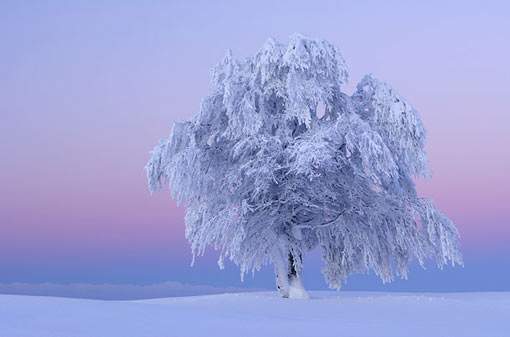You are hereArchive - Dec 5, 2008
Archive - Dec 5, 2008
Portraits of wondrous Earth: ice storm glazed tree; poetic snowflakes; ice caverns; Giant's Causeway; geysers; sea unicorns

(quote)
Ice
The residue of an ice storm glazes a beech tree, pushing its branches to a near-breaking point. Ice storms are formed when two layers of cold air (one near the earth's surface, another far above) sandwich between them a tier of warm air. Precipitation from the top layer starts out as snow, but when it falls into the middle, warmer belt, it melts into rain. Then, on its way through the lowest belt, it undergoes a little-understood process known as "supercooling" which causes it to chill well below the freezing point of water, yet still remain liquid. When this unnaturally cold water hits the ground, it instantaneously freezes into a translucent glaze that takes on, in intricate detail, the shape of whatever it surrounds.

Clouds
Water is a shape shifter: familiar in its liquid and frozen forms, it is invisible in its third form, as a vapor, until it coalesces into clouds overhead or shrouds us in ghostly fog. One of nature's everyday wonders, clouds hide in plain sight until they are touched with the sun's glory at sunrise and sunset or pile up to form a lightning-generating, anvil-headed cumulonimbus thundercloud.

The Sun read more »


















